Queen's Park (Toronto)
Queen's Park is an urban park in Downtown Toronto, Ontario, Canada. Opened in 1860 by Edward, Prince of Wales, it was named in honour of Queen Victoria. The park is the site of the Ontario Legislative Building, which houses the Legislative Assembly of Ontario. The phrase "Queen's Park" is regularly used as a metonym for the Government of Ontario or the Legislative Assembly of Ontario.[1]
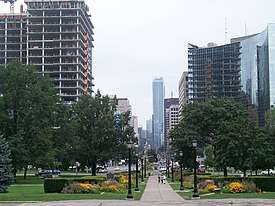
The park is nearly an enclave of the University of Toronto, which occupies most of the surrounding lands. In 1859, the land was leased by the University of Toronto to the City of Toronto government for a 999-year term.[2] In 1880, a "portion of the Queen's Park [was] selected [and given to] the Government of Ontario, as a site for the erection of new Legislative and Departmental buildings".[3] The land that is occupied by the Legislative Assembly of Ontario is owned by the Government of Ontario. The north park is owned by the University of Toronto and leased to the city. Ministry buildings of the Ontario government occupy other properties to the east of the park, in an area between Wellesley Street and Grosvenor Street. While not adjacent to the park, the Royal Ontario Museum and the Gardiner Museum are located nearby.
Features
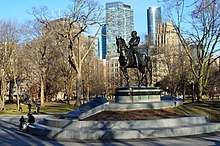
The section of the park north of Wellesley Street follows the traditional British design, dominated by large trees that provide extensive cover during summer. Footpaths radiate outwards from an equestrian statue of Edward VII, which stands on a large mound at the centre of the northern section. The statue originally stood in Delhi, India, but was moved to Canada in 1969. The main north-south path runs between the statue and the war memorial of the 48th Highlanders at the park's northern tip. The site is approximately oval; however the southwestern edge of Queens Park "kinks in" somewhat. In the past, this was the bank of Taddle Creek. With the creek long-buried, the kink remains.
The oval park is bounded by Queen's Park Crescent East and West. These form part of a major through route consist of University Avenue (south of College Street), Queen's Park Crescent East and West, Queen's Park, and Avenue Road (north of Bloor Street). Queen's Park Crescent East and West carry northbound and southbound traffic respectively and are linked to make a complete counterclockwise loop around the park. University Avenue, Queen's Park (with no suffix), and Avenue Road have two-way traffic and lie in essentially the same straight line. Wellesley Street bisects Queen's Park Crescent slightly north of the loop's centre.
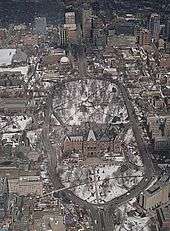
Line 1 Yonge-University of the Toronto subway runs below University Avenue, Queen's Park (the park, to one side of the legislature), and Queen's Park (the street), serving the area via its Queen's Park and Museum stations. Other public transit access is provided by the 5 Avenue Road and 94 Wellesley bus routes, and the 506 Carlton streetcar route.
The north section of Queen's Park is the 'saluting station' for the Province of Ontario. Gun salutes are conducted here to mark special occasions including Victoria Day (fired at 1200 EDT), Canada Day (fired at 1200 EDT), and Remembrance Day (fired at 1102 EST). Other salutes are also conducted here throughout the year as dictated by protocol.
Statues and monuments
The southern section of the park is the site of the Ontario Legislature, the seat of the provincial government. The grounds contain several monuments commemorating notable historical figures and events.
Memorials at Queen's Park includes the North-West Rebellion memorial, the Ontario Police Memorial, the Ontario Firefighter Memorial, the Ontario Veterans Memorial, and the 48th Highlanders of Canada memorial. A sandstone monument with Italian marble figures and bronze plaques was erected on the University of Toronto Campus by the Canadian Volunteer Monument Campaign of 1866, Committee of Toronto citizens and its chairman, Dr. McCaul, then President of the University of Toronto. The Lime Ridge Monument was dedicated to those of (9th Company or University Rifle Corps) The Queen's Own Rifles of Canada regiment who were killed in action or who died from wounds defending her frontier in June 1866.[4]
Two Russian cannons are located outside the legislative building entrance. They were captured by the British during the Crimean War, and sent to Toronto in 1859 as a gift from Queen Victoria. The cannons were originally positioned where the Sir John A. Macdonald's statue is now located, moving to its present location after the statue's completion in 1894. In addition to these memorials, the Queen Elizabeth II Rose Gardens is also located here, in honour of Her Majesty's Silver Jubilee in 1977 and Golden Jubilee in 2002.
The Canadian Volunteer Memorial, honouring militia volunteers who had died fighting against Fenian invaders at the Battle of Limeridge is located just west of Queen's Park in an isolated corner of the University of Toronto campus. Although this monument was in Queen's Park at the time of its unveiling in 1870, it has since been cut off from the rest of the park by the construction of Queen's Park Crescent.[5]
| Figure | Portrait | Statue | Notes |
|---|---|---|---|
| Queen Victoria |  | Created by Mario Raggi in 1870, the Province of Ontario purchased the monument in 1902. | |
| George Brown | 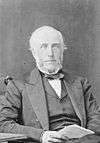 |  | Created by Charles Bell Birch, it was unveiled in 1884. The monument was the first permanent statue honouring a historic figure at Queen's Park. |
| Sir John A. Macdonald | .jpg) |  | Created by Hamilton MacCarthy, the statue was unveiled in 1894. |
| John Graves Simcoe | 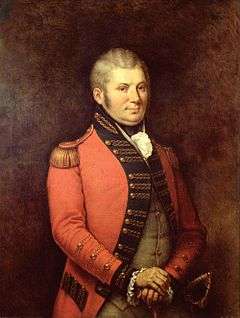 | Created by Walter Seymour Allward, the statue was unveiled in 1903. | |
| Sir Oliver Mowat | .jpg) |  | Created by Walter Seymour Allward, the statue was unveiled in 1905. |
| John Sandfield Macdonald | 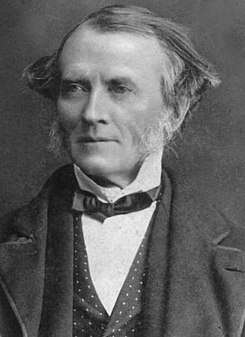 |  | Created by Walter Seymour Allward, the statue was unveiled in 1909. |
| King Edward VII | 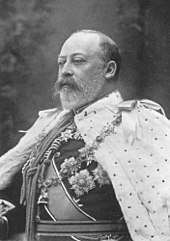 | Created by Thomas Brock for the 1911 Imperial Durbar, it was originally located at King Edward VII Park (now Netaji Subhash Park) in Delhi, India in 1919. It was removed in 1967, sold in 1968 and re-installed in Toronto in 1969. | |
| Sir James Whitney | 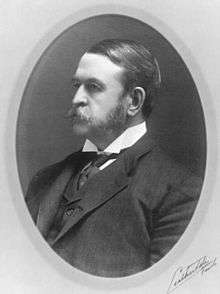 | Created by Hamilton MacCarthy, the statue was unveiled in 1927. | |
| William Lyon Mackenzie | 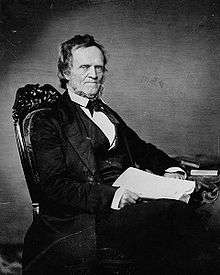 |  | Created by Walter Seymour Allward, the bust was unveiled in 1940. |
| Al Purdy | Created by Edwin and Veronica Dam de Nogales, the statue was unveiled in 2008. |
References
- "Legacy of a People's Park". Education Portal. Legislative Assembly of Ontario. Archived from the original on 21 January 2015. Retrieved 21 January 2015.
- "Queen's Park". Toronto's Historical Plaques. Retrieved 15 April 2018.
- Arthur, Eric. 1979. From Front Street to Queen's Park. p67.
- "Canadian Volunteers Monument (Campaign of June 1866): Memorial 35091-021 Toronto, ON". National Inventory of Canadian Military Memorials. Veterans Affairs Canada. Retrieved 5 January 2017.
- "Celebration of Dominion Day—Unveiling of a Monument in Toronto—Imposing Ceremonies" (PDF). The New York Times. 1870-07-03.
External links
| Wikimedia Commons has media related to Queen's Park. |
- Photos of Battle of Limeridge monument
- Queen's Park Historical Plaque
- Art at Queens Park, online exhibit on Archives of Ontario website
